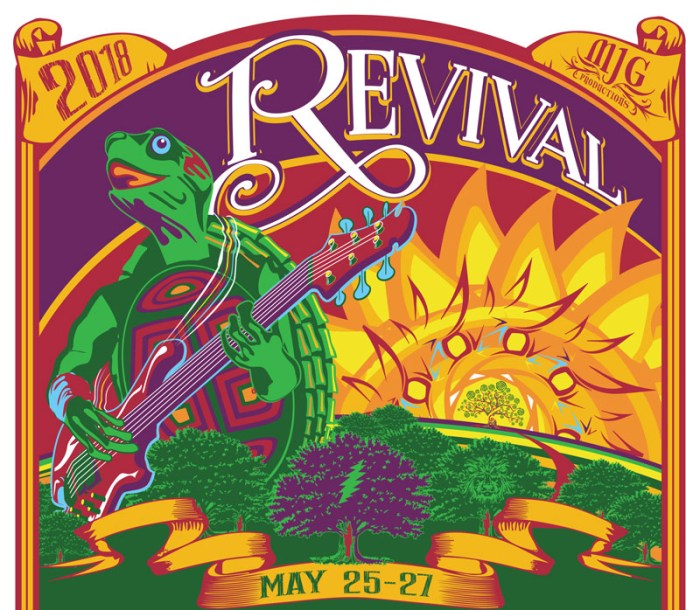
Regional music revival sets the stage for this enthralling narrative, offering readers a glimpse into a story that is rich in detail and brimming with originality from the outset. This movement is not just about music; it reflects the essence of communities, highlighting their unique cultural expressions and historical roots. As societies undergo social transformations, the resurgence of regional music becomes a powerful tool for preserving identity and fostering local pride.
From the unique instruments that define specific genres to the grassroots efforts that promote local artists, regional music revival is deeply interwoven with the fabric of cultural identity. It thrives on the contributions of literature and telecommunications, which play pivotal roles in documenting, preserving, and disseminating these vibrant musical traditions.
Definition and Historical Context of Regional Music Revival
Regional music revival refers to the resurgence of interest and appreciation for traditional music that reflects local cultures and identities. This phenomenon often occurs as communities seek to reconnect with their roots and preserve their musical heritage in the face of globalization and cultural homogenization. Historically, regional music has deep roots in various cultures, serving not only as entertainment but also as a means of storytelling and cultural expression.The historical context of regional music can be traced back to the oral traditions of storytelling, where music played a vital role in conveying history, values, and social norms.
In many cultures, music is intertwined with rituals, celebrations, and everyday life. Social movements throughout history, such as the folk music revival of the 1960s, have significantly influenced the resurgence of regional music, prompting a rediscovery of local sounds and styles.
Key Characteristics of Regional Music

Regional music is characterized by its unique elements that distinguish it from other musical forms. These include traditional instruments, specific rhythms, and distinct vocal styles that resonate with the cultural identity of a community.
- Unique Elements: Regional music often incorporates storytelling elements, reflecting the local culture and social issues. The lyrics may be in local dialects, adding authenticity and personal connection.
- Instruments: Common instruments vary by region; for example, the sitar is prominent in Indian classical music, while the accordion is central to Cajun music in Louisiana.
- Community Identity: Regional music acts as a mirror of community traditions, fostering a sense of belonging and pride among its practitioners and listeners.
Impact of Telecommunications on Regional Music Revival
Telecommunications have played a pivotal role in the revival of regional music by making it more accessible to a broader audience. The advent of the internet and mobile technology has allowed artists to share their music globally, transcending geographical barriers.Social media platforms have become powerful tools for promoting regional music artists, enabling them to connect directly with fans and build communities around their music.
Digital platforms such as Spotify and YouTube have also facilitated the resurgence of regional music by providing spaces for artists to showcase their work and reach diverse audiences.
The Role of Literature and Libraries in Preserving Regional Music
Literature plays an essential role in preserving and understanding regional musical traditions. Through the documentation of folk tales, song lyrics, and historical accounts, literature helps keep the narrative of regional music alive.Libraries undertake significant initiatives to archive regional music history by collecting recordings, manuscripts, and other resources. These archives not only preserve the music but also serve as educational tools for future generations.
Promoting regional music education through literature can further enhance appreciation and encourage new talents to emerge within the local music scene.
Influence of Music and Radio on Regional Music Revival
Local radio stations are crucial in supporting regional music artists and genres. They provide a platform for airplay, helping to introduce new music to listeners who may not have access to mainstream media. This grassroots approach fosters community engagement and boosts local music scenes.Music festivals dedicated to regional genres have contributed significantly to the revival of regional music, attracting audiences and promoting cultural exchange.
For instance, festivals like the MerleFest in North Carolina highlight traditional Appalachian music, bringing together artists and fans alike.
Regional Music in Movies and Television
Films and television series utilize regional music to enhance storytelling and evoke emotional responses. By incorporating local sounds into their soundtracks, creators can add authenticity and depth to their narratives. Soundtracks featuring regional music can spark public interest and contribute to a revival of traditional styles. For example, the film “O Brother, Where Art Thou?” played a significant role in popularizing bluegrass music, bringing it to new audiences and reigniting interest in the genre.
Case Studies of Successful Regional Music Revivals
Several regions have experienced notable success in music revival, each employing unique methods and practices that contributed to their achievements. For instance, the revival of Irish traditional music in the 20th century saw artists like The Chieftains and Altan leading the charge, blending modern influences with traditional sounds. Similarly, the Norteño music revival in Northern Mexico has gained momentum, with bands like Los Tigres del Norte bringing regional sounds to the forefront of the music industry.Such movements often involve collaborations between established artists and newcomers, creating a dynamic environment that promotes creativity and innovation within the genre.
Future Trends in Regional Music Revival
Looking ahead, trends in regional music revival are expected to evolve, reflecting current societal movements and technological advancements. The rise of platform-based music distribution could further enhance the visibility of regional music, allowing artists to share their sounds with global audiences.Globalization presents both challenges and opportunities for regional music preservation. While it can dilute local cultures, it also fosters cross-cultural collaborations that can lead to innovative musical fusions.
Fostering new talent within regional music scenes can be supported through workshops, mentorship programs, and collaborative projects that encourage creativity and preserve traditional practices. Such initiatives ensure that regional music not only survives but thrives in contemporary settings.
Last Recap
In summary, the regional music revival is a fascinating intersection of history, community, and creativity, breathing new life into traditional sounds while adapting to modern influences. As we look to the future, the continued support for local artists and the embrace of digital platforms promise to sustain this rich musical heritage for generations to come. Celebrating and preserving these regional sounds not only enriches our cultural landscape but also strengthens the bonds within communities.
Commonly Asked Questions
What is regional music revival?
It refers to the resurgence and promotion of traditional music specific to a region, often involving local instruments and cultural expressions to strengthen community identity.
How do telecommunications affect regional music?
Telecommunications, especially social media and digital platforms, facilitate the widespread sharing of regional music, connecting artists with broader audiences and enhancing visibility.
What role do libraries play in preserving regional music?
Libraries archive regional music resources and history, providing access to literature and educational programs that promote local musical traditions.
How do music festivals contribute to regional music revival?
Music festivals serve as platforms to showcase regional artists, attract audiences, and foster a sense of community around shared musical heritage.
What trends are emerging in regional music revival?
Current trends include increased collaboration between genres, greater use of technology for promotion, and a growing appreciation for diverse cultural expressions in music.





